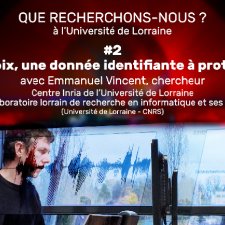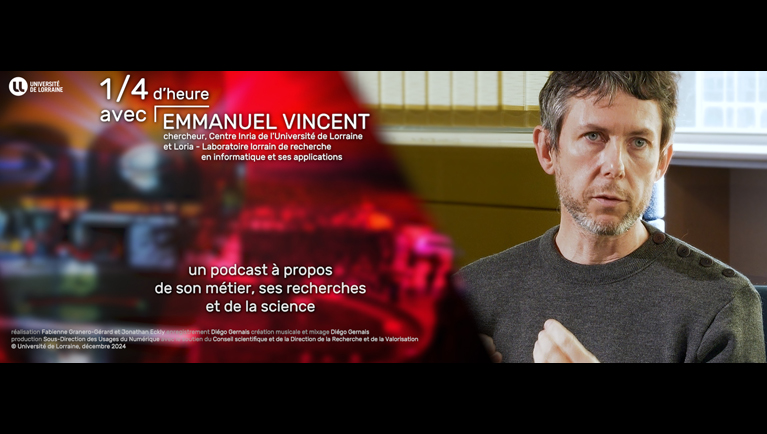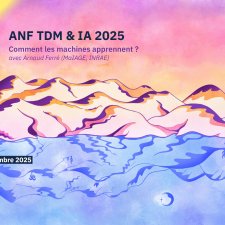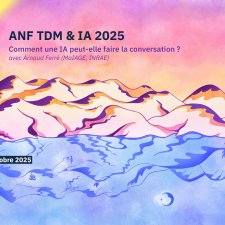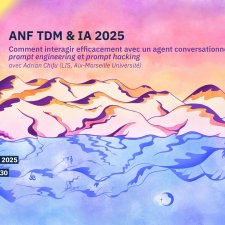Notice
Projection methods for community detection in complex networks
- document 1 document 2 document 3
- niveau 1 niveau 2 niveau 3
Descriptif
In this work we present a new framework that rephrases the task of community detection as a nearest neighbor search on a high-dimensional hypersphere. This yields a new class of community detection methods, which we call the `projection methods’. A projection method consists of two steps: 1) The networks is mapped to a query vector on a high-dimensional hypersphere. 2) The query vector is projected to the set of clusterings, where each clustering, too, is a vector on the hypersphere; this projection step is done by minimizing the distance between the query vector and the clustering, over the set of all clusterings. We prove that projection methods generalize many popular community detection methods, including modularity maximization. This has many practical implications. For example, modularity maximization and many other methods suffer from the same `granularity problem’: they have some parameter that controls granularity of the obtained clustering, but no method to predict the obtained granularity from the value of this parameter. In projection methods, the granularity of the obtained clustering is close to that of the query vector. With this insight, we provide a general heuristic for choosing a query vector to address the granularity problem. Another advantage of the projection methods is that a query vector may explicitly depend on various network characteristics (edges, wedges, triangles), thus seamlessly including these in community detection.
Intervention / Responsable scientifique
Thème
Sur le même thème
-
La voix, une donnée identifiante à protéger
VincentEmmanuelEmmanuel Vincent, chercheur au Centre Inria de l'Université de Lorraine et au Loria (Laboratoire lorrain de recherche en informatique et ses applications), présente sa recherche sur l'anonymisation de
-
Podcast 1/4 d'heure avec : Emmanuel Vincent, chercheur au Centre Inria de l'Université de Lorraine …
VincentEmmanuelRencontre avec Emmanuel Vincent - chercheur au Centre Inria de l'Université de Lorraine et Loria (Laboratoire lorrain de recherche en informatique et ses applications).
-
Comment les machines apprennent ?
FerréArnaudANF TDM & IA 2025 | Comment les machines apprennent ? avec Arnaud Ferré (MaIAGE, INRAE)
-
Comment une IA peut-elle faire la conversation ?
FerréArnaudANF TDM & IA 2025 | Comment une IA peut-elle faire la conversation ? avec Arnaud Ferré (MaIAGE, INRAE)
-
Panorama des outils propriétaires et open source
ChifuAdrian-GabrielANF TDM & IA 2025 | Panorama des outils propriétaires et open source avec Adrian Chifu (LIS, Aix-Marseille Université)
-
Interagir efficacement avec un agent conversationnel
ChifuAdrian-GabrielANF TDM & IA 2025 | Comment interagir efficacement avec un agent conversationnel : prompt engineering et prompt hacking avec Adrian Chifu (LIS, Aix-Marseille Université)
-
Les modèles de langue : usages et enjeux sociétaux
GuigueVincentANF TDM & IA 2025 | Les modèles de langue : usages et enjeux sociétaux avec Vincent Guigue (MIA, AgroParisTech)
-
Déploiement d'IA sécurisées en local appliqué aux données sensibles et open source
SanjuanEricANF TDM & IA 2025 | Retour d’expérience sur le déploiement d'IA sécurisées en local (processus ETLs) appliqué aux données sensibles (santé) et open source (OpenAlex) avec Éric SanJuan (LIA, Avignon
-
Interroger ses documents avec des grands modèles de langage : méthode RAG
PoulainPierreANF TDM & IA 2025 | Interroger ses documents avec des grands modèles de langage : découverte de la méthode RAG avec Pierre Poulain (Laboratoire de Biochimie Théorique, Université Paris Cité)
-
Extraire de l'information dans la littérature scientifique avec TDM Factory
AnkiLucasANF TDM & IA 2025 | TDM Factory, une interface clé en main pour extraire de l'information dans la littérature scientifique avec de l’intelligence artificielle avec Lucas Anki (Inist-CNRS) et Léo
-
Fouille de textes et IA : enjeux juridiques et réglementaires
MaurelLionelANF TDM & IA 2025 | Fouille de textes et IA : enjeux juridiques et réglementaires avec Lionel Maurel (DDOR CNRS)
-
Machines algorithmiques, mythes et réalités
MazenodVincentVincent Mazenod, informaticien, partage le fruit de ses réflexions sur l'évolution des outils numériques, en lien avec les problématiques de souveraineté, de sécurité et de vie privée...


